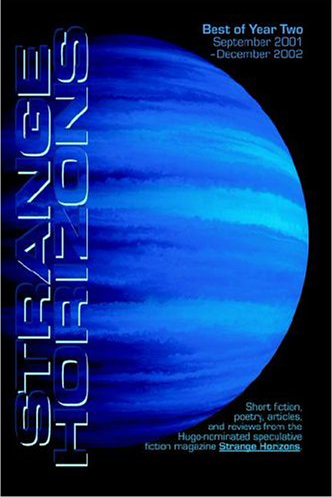The Quantum Choice: You Can Have either Sex or Immortality
Tuesday, March 29th, 2011Note: A long-term study from Northwestern University (not yet in PubMed) has linked participation of young adults in religious activities to obesity in later life. Overhanging waistlines in First World societies undoubtedly contribute to the degenerative illnesses of lengthened lifespan. But it’s important to keep in mind that fat fulfills critical functions. This article, which looks at the other side of the coin, was commissioned by R. U. Sirius of Mondo 2000 fame and first appeared in H+ Magazine in September 2009.
 Because of the four-plus centuries of Ottoman occupation, the folklore of all Balkan nations shares a Trickster figure named Hodja (based on 13th century Konyan Sufi wandering philosopher Nasreddin). In one of the countless stories involving him, Hodja has a donkey that’s very useful in carting firewood, water, etc. The problem is that he eats expensive hay. So Hodja starts decreasing the amount of hay he feeds the donkey. The donkey stolidly continues doing the chores and Hodja, encouraged by the results, further decreases the feed until it’s down to nothing. The donkey continues for a few days, then keels over. Hodja grumbles, “Damnable beast! Just when I had him trained!”
Because of the four-plus centuries of Ottoman occupation, the folklore of all Balkan nations shares a Trickster figure named Hodja (based on 13th century Konyan Sufi wandering philosopher Nasreddin). In one of the countless stories involving him, Hodja has a donkey that’s very useful in carting firewood, water, etc. The problem is that he eats expensive hay. So Hodja starts decreasing the amount of hay he feeds the donkey. The donkey stolidly continues doing the chores and Hodja, encouraged by the results, further decreases the feed until it’s down to nothing. The donkey continues for a few days, then keels over. Hodja grumbles, “Damnable beast! Just when I had him trained!”
Whenever I hear about longevity by caloric restriction, I immediately think of this story.
But to turn to real science, what is the basis for caloric restriction as a method of prolonging life? The answer is: not humans. The basis is that it appears (emphasis on the appears) that feeding several organisms, including mice and rhesus monkeys, near-starvation diets, seems to roughly double their lifespan. Ergo, reasons your average hopeful transhumanist, the same could happen to me if only I had the discipline and time to do the same –- plus the money, of course, for all the supplements and vitamins that such a regime absolutely requires, to say nothing of the expense of such boutique items as digital balances.
I will say a few words first about such beasties as flies (Drosophila melanogaster) and worms (Caenorhabditis elegans) before I climb the evolutionary ladder. Many organisms in other branches of the evolutionary tree have two “quantum” modes: survival or reproduction. For example, many invertebrates are programmed to die immediately after reproduction, occasionally becoming food for their progeny. In some cases, their digestive tracts literally disintegrate after they release their fertilized eggs. Conversely, feeding a infertile worker bee royal jelly turns her into a fully functioning queen. The general principle behind caloric restriction is that it essentially turns the organism’s switch from reproductive to survival mode.
Most vertebrates from reptiles onward face a less stark choice. Because either or both parents are required to lavish care on offspring, vertebrate reproduction is not an automatic death sentence. So let’s segue to humans. Due to their unique birth details, human children literally require the vaunted village to raise them — parents, grandparents, first degree relatives, the lot. At the same time, it doesn’t take scientific research to notice that when calories and/or body fat fall below a certain minimum, girls and women stop ovulating. It also takes just living in a context of famine, whether chosen or enforced, to notice the effects of starvation on people, from lethargy and fatigue to wasted muscles, brittle bones and immune system suppression, crowned with irritability, depression, cognitive impairment and overall diminished social affect.
Ah, says the sophisticated caloric restriction advocate, but much of this comes from imbalances in the diet –- missing vitamins, minerals, etc. Well, yes and no. Let me give a few examples.
All vitamins except B and C are lipid-soluble. If we don’t have enough fat, our body can’t absorb them. So the excess ends up in odd places where it may in fact be toxic –- hence the orange carotenoid-induced tint that is a common telltale sign of many caloric restriction devotees. Furthermore, if we have inadequate body fat, not only are we infertile, infection-prone and slow to heal due to lack of necessary hormones and cholesterol; our homeostatic mechanisms (such as temperature regulation) also flag. And because caloric restriction forces the body to use up muscle protein and leaches bones of minerals, practitioners can end up with weakened hearts and bone fractures.
 Speaking of fat, the brain has no energy reserves. It runs exclusively on glucose. When starved of glucose, it starts doing odd things, including the release of stress chemicals. This, in turn, can induce anything from false euphoria to hallucinations. This phenomenon is well known from anorexics and diabetics entering hypoglycemia, but also from shamans, desert prophets and members of cultures that undertook vision quests, which invariably included prolonged fasting. So caloric restriction may make its practitioners feel euphoric. But just as people feel they have comprehended the universe while under the influence of psychoactive drugs, so does this practice impair judgment and related executive functions.
Speaking of fat, the brain has no energy reserves. It runs exclusively on glucose. When starved of glucose, it starts doing odd things, including the release of stress chemicals. This, in turn, can induce anything from false euphoria to hallucinations. This phenomenon is well known from anorexics and diabetics entering hypoglycemia, but also from shamans, desert prophets and members of cultures that undertook vision quests, which invariably included prolonged fasting. So caloric restriction may make its practitioners feel euphoric. But just as people feel they have comprehended the universe while under the influence of psychoactive drugs, so does this practice impair judgment and related executive functions.
So what about those glowing reports which purport to have demonstrated that caloric restriction doubles the lifespans of mice and rhesus monkeys, as well as giving them glossy pelts? Surely we can put up with a bit of mental confusion, even failing erections, in exchange for a longer life, as long as it’s of high quality –- otherwise we’ll end up like poor Tithonus, who was granted immortality but not youth and dwindled into a shriveled husk before the gods in their whimsical mercy turned him into a cicada. And it does seem that caloric restriction decreases such banes of extended human lifespan as diabetes and atherosclerosis. Well, there’s something interesting going on, all right, but not what people (like to) think.
In biology, details are crucial and mice are not humans. In Eldorado Desperadoes: Of Mice and Men, I explained at length why non-human studies are proof of principle at best, irrelevant at worst. Laboratory mice and monkeys are bred to reproduce early and rapidly. They’re fed rich diets and lead inactive lives –- the equivalent of couch potatoes. The caloric restriction studies have essentially returned the animals to the normal levels of nutrition that they would attain in the wild. Indeed, caloric restriction of wild mice does not extend their lives and when caloric levels fall below about 50%, both lab and wild mice promptly keel over, like Hodja’s donkey. In the rhesus studies, lifespans appeared extended only when the investigators counted a subset of the deaths in the animal group they tested.
On the molecular level, much attention has been paid to sirtuin activators, resveratrol chief among them. Sirtuins are a class of proteins that regulate several cell processes, including aspects of DNA repair, cell cycle and metabolism. This means they’re de facto pleiotropic, which should give would-be life extenders pause. As for resveratrol, it doesn’t even extend life in mice –- so the longer lives of the red-wine loving French result from other causes, almost certainly including their less sedentary habits and their universal and sane health coverage. That won’t stop ambitious entrepreneurs from setting up startups that test sirtuin activators and their ilk, but I predict they will be as effective as leptin and its relatives were for non-genetic obesity.
This brings to mind the important and often overlooked fact that genes and phenotypes never act in isolation. An allele or behavior that is beneficial in one context becomes deleterious in another. When longer-lived mutants and wild-type equivalents are placed in different environments, all longevity mutations result in adaptive disadvantages (some obvious, some subtle) that make the mutant strain disappear within a few generations regardless of the environment specifics.
Similarly, caloric restriction in an upper-middle class context in the US may be possible, if unpleasant. But it’s a death sentence for a subsistence farmer in Bangladesh who may need to build up and retain her weight in anticipation of a famine. For women in particular, who are prone to both anorexia and osteoporosis, caloric restriction is dangerous –- hovering as it does near keeling over territory. As for isolated, inbred groups that have more than their share of centenarians, their genes are far more responsible for their lifespan than their diet. So does the fact that they invariably lead lives of moderate but sustained physical activity surrounded by extended families, as long as they are relatively dominant within their family and community.
Human lifespan has already nearly tripled, courtesy of vaccines, antibiotics, clean water and use of soap during childbirth. It is unlikely that we will be able to extend it much further. Extrapolations indicate that caloric restriction will not lengthen our lives by more than 3% (a pitiful return for such herculean efforts) and that we can get the same result from reasonable eating habits combined with exercise. Recent, careful studies have established that moderately overweight people are the longest-lived, whereas extra-lean people live as long as do obese ones.
 So what can you really do to extend your life? Well, as is the case with many other quality-of-life attributes, you should choose your parents carefully. Good alleles for susceptibilities to degenerative age-related diseases (diabetes, heart disease, hypertension, dementia) are a great help — as is high income in a developed country with first-rate medical services, which will ensure excellent lifelong nutrition and enough leisure time and/or devoted underlings to make it possible to attend to suchlike things.
So what can you really do to extend your life? Well, as is the case with many other quality-of-life attributes, you should choose your parents carefully. Good alleles for susceptibilities to degenerative age-related diseases (diabetes, heart disease, hypertension, dementia) are a great help — as is high income in a developed country with first-rate medical services, which will ensure excellent lifelong nutrition and enough leisure time and/or devoted underlings to make it possible to attend to suchlike things.









